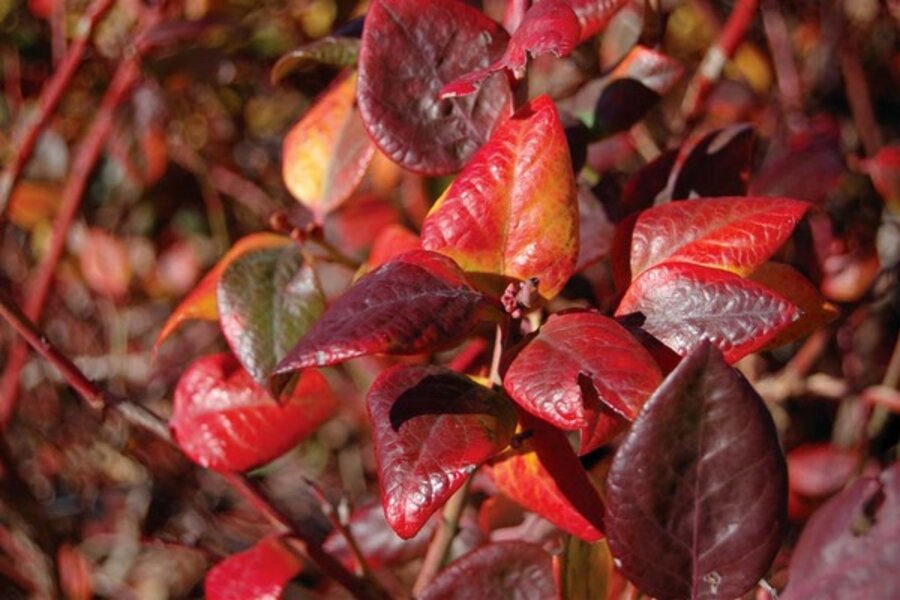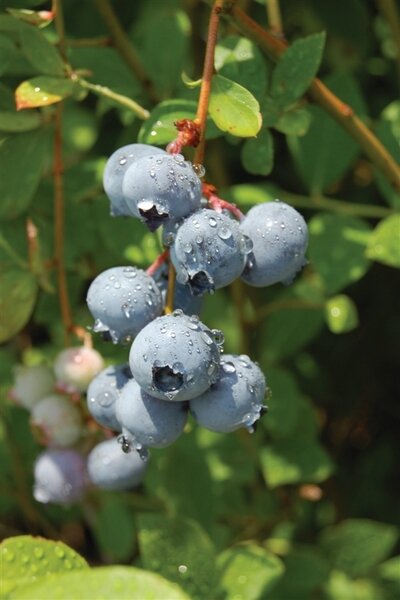Spectacular fall foliage from an unexpected source: blueberries
Loading...
I often recommend that homeowners plant blueberries because they’re one of the easiest fruits to grow, with few insect and disease problems and therefore little or no spraying is required.
And they fit into a yard anywhere a medium-size deciduous shrub would go, since that’s what a blueberry basically is (albeit a bush that produces delicious fruit).
But one of the best reasons for growing blueberries becomes evident after the berries have all been eaten or tucked away into the freezer. It’s bright red fall leaves.
Since many people like to have several shrubs or trees in their yard that have spectacular fall foliage, planting a couple of blueberries accomplishes two things – they provide summer fruit and autumn color.
I’m currently growing two interesting new blueberries that will be available in nurseries next year. Not only do they have excellent red foliage, they also overcome one of the typical drawbacks of blueberries for a small yard: They’re self-fertile.
That means that you don’t need two shrubs for cross-pollination. One is sufficient.
Blue Suede for early-season berries
Blue Suede [PDF] is a rabbiteye blueberry for Southern gardeners (Zones 6a to 9a, the developers estimate).
See its glorious red leaves the photo above. This plant is being released by the University of Georgia and the USDA Agricultural Research Service. Berries are large, nicely colored, and tasty.
Blue Suede also ripens early and bears over a long period of time, desirable traits in a home-grown berry It will even grow in a large pot on a patio.
This new blueberry is being marketed by Gardener’s Confidence and will be available in nurseries in the spring of 2011.
Are you ready for a pink blueberry?
Pink Lemonade may sound like an unusual name for a blueberry – and it is. But this is one unusual blueberry…uh, pinkberry?
I saw and tasted the berries from Pink Lemonade at the Garden Writers Association symposium in Dallas earlier in the fall. Boy, were they delicious. I couldn’t stop snacking on them!
If the word lemonade makes you think of something tart or slightly sour, that’s certainly not true for Pink Lemonade blueberry – it’s very sweet. And yes, for traditionalists, it tastes like regular blue blueberries, but nice, sweet blueberries.
Some of the berries I tried were pink but most were partially pink, which was fine with me. I’m not sure I’m ready for a completely pink blueberry.
Pink Lemonade offers four seasons of interest in the home garden:
- Pinkish-white, bell-shaped flowers in spring.
- Summer fruit that pale green at first, then dappled pink, and finally deep pink.
- In fall, leaves first turn yellow and then bright orange.
- Wintertime twigs are reddish-brown. “Wintertime fruit encourages songbirds and other wildlife in the garden,” says Briggs Nursery, which is marketing Pink Lemonade.
The bush should grow to slightly less than five feet tall and a bit wider than that.
Don’t expect anything from a new blueberry its first year. That’s when it grows. The next year may see a small amount of fruit. But the third year, the bush usually begins bearing.
Pink Lemonade may take four years instead of three. Because it bears fruit mid- to late season, it will be an excellent companion to Blue Suede, the early bearer.
All blueberries need acid soil and full sun.
-----
Judy Lowe is the founder and editor of the Diggin' It blog and the author of a number of gardening books. Her latest, about herb theme gardens, will be published in January 2011.






